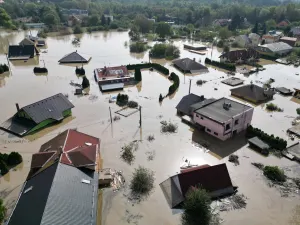
Invasive fungus that kills elm trees detected in Edmonton for first time
Dutch elm disease has been detected in the city, leaving thousands of trees that line the streets of Edmonton vulnerable to infestation from the fatal fungus.
The fungus has been detected in several trees in the Killarney neighbourhood in northeast Edmonton, and along the Yellowhead Corridor East — marking the first appearance of the disease in the city.
Dutch elm disease is a costly and deadly fungus that poses a threat to all species of elm trees in Alberta, including 90,000 elms owned by the city. In some of Edmonton's mature neighbourhoods, elms make up nearly 100 per cent of boulevard trees.

Elm leaves tend to wilt and turn brown if the tree is infected with Dutch elm disease (CBC News/Kirk Fraser)
SEE ALSO: Invasive fungus that kills oak trees spreads across Ontario
As of Aug. 30, a total of four trees have tested positive for the disease, the city said in a statement Tuesday.
"Edmontonians take great pride in our city's urban forest. The detection of Dutch elm disease will understandably raise concerns, and we want to reassure Edmontonians that we have taken — and will continue to take — swift action to address the situation," Mark Beare, the city's director of infrastructure operations, said in the statement.
City officials said they are working with the Canadian Food Inspection Agency (CFIA) and the Alberta government to contain the spread and limit the damage.
Inspections are ongoing. Sick or weak trees considered most at risk are being culled from city streets.
"The city's robust and proactive approach to inspections helped to identify the first cases early and we are currently assessing and evaluating all of the elms in the impacted neighbourhoods," Beare said.
A fatal infection
The fungus, which clogs a tree's water-conducting systems, has killed millions of elms in North America over the past century. Communities have spent millions in efforts to control the spread.
The infection moves quickly. Leaves on infected trees suddenly wilt, drop, curl and turn brown as the disease spreads from branch to branch.
The fungus is primarily spread through the tree canopy by three species of beetle; the smaller European elm bark beetle, the banded elm bark beetle and the native elm bark beetle.
The beetles are attracted to weak and dying trees, which serve as breeding sites. Once the beetles reach adulthood and take wing, they fly to healthy elms to feed, bringing the fungus with them.
Infected trees usually die within a season or two.
The fungus has been creeping across Canada for decades. Edmonton has been bracing for signs of infection.
City officials said the fungus was first detected in early August during a routine inspection. Samples from the diseased trees were immediately submitted for testing and the CFIA was notified.
On Aug. 27, lab results confirmed the presence of the fungus, the city said. On Aug. 29, two additional cases were confirmed.
Limiting the damage
The city said all infected trees have been removed. Crews are conducting targeted elm removal to reduce the habitat of the beetles that spread the fungus.
City-owned elms with significant leaf death at the top of the tree, small elms, and elms in unsuitable growing locations, such as alleys, are being considered for immediate removal.
City-owned elms along 127th Avenue have been injected with an insecticide to improve their defence against insects. The treatments are expected to continue.
Elms are a popular variety of tree in Alberta and Edmonton is no exception. A province-wide inventory in 2017 identified at least 600,000 elms growing in communities across Alberta.
In Edmonton, elm species account for 22 per cent of the city's tree inventory.
Spotting an infestation
Edmontonians are being encouraged to report any signs of an infestation to 311. Infected trees may have dead branches or browning leaves. The trunks may have holes or sawdust on the bark from burrowing beetles.
Dutch elm disease was discovered in Canada in 1944 and has since become established in all provinces except British Columbia, Alberta and Newfoundland and Labrador.
In Alberta, both Dutch elm pathogens and the elm bark beetles that carry them — are named declared pests and the province has been largely successful in keeping the disease out. Alberta and B.C. are the only provinces remaining in Canada not officially listed as infestation zones by the CFIA.
This article, written by Wallis Snowdon, was originally published for CBC News on Sept. 3.









